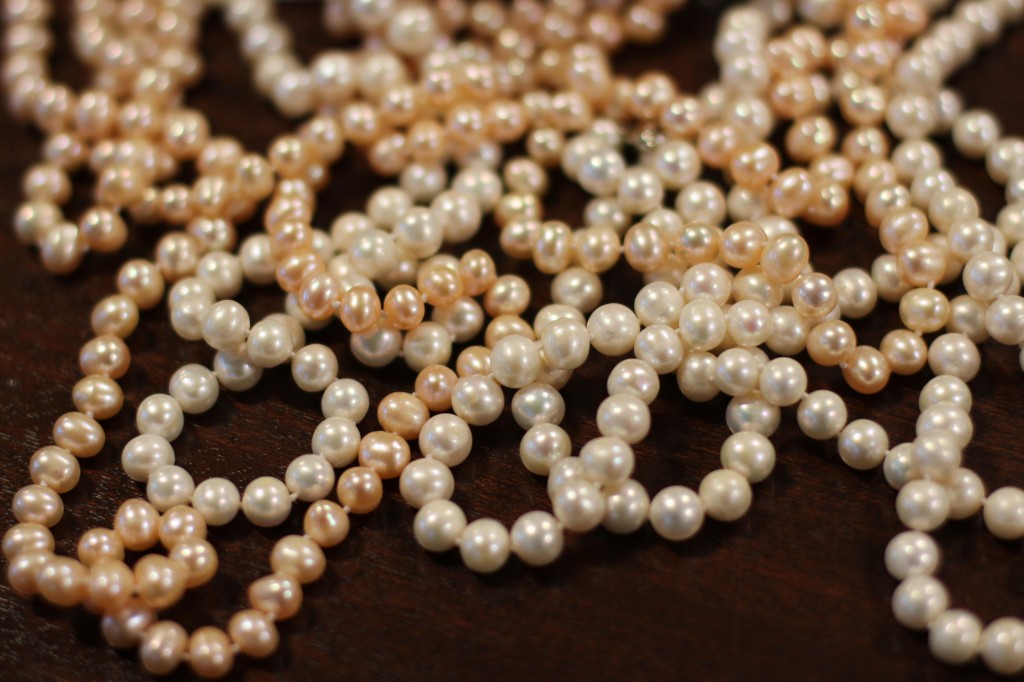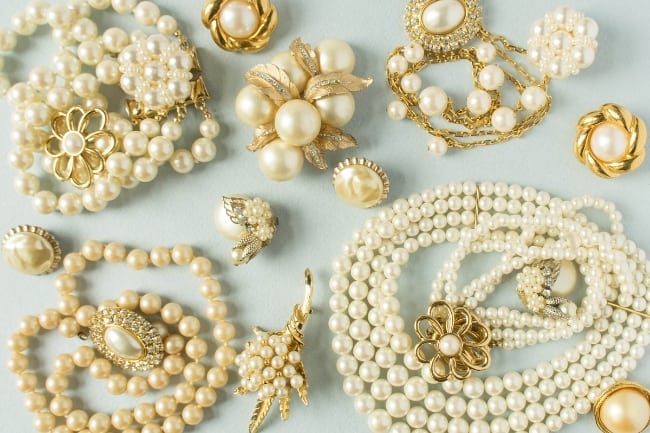Understanding the history of pearls and other jewels is a prerequisite to determining whether or not a strand is genuine. Considering that they are produced by a living organism, pearls are really unique among jewels. Pearls, sometimes called the "Queen of Gems," have been highly valued by mankind for thousands of years, all the way back to the Roman Empire. However, many industry insiders claim the gemstone's popularity has never been higher than it is right now. Pearls are a classic accessory that can be worn with any ensemble and provide a touch of sophistication. Demand for the rare diamond is tremendous all across the globe. However, sadly, as fake pearl manufacture has increased in response to demand, this trend is not without its drawbacks. With improvements in fake pearl production, more and more consumers are being duped into purchasing low-quality pearls. Learn the ins and outs of identifying genuine pearls from imitations in this comprehensive essay. Firstly, we provide background by explaining what makes a pearl genuine, and then we go on to the specifics by determining how to achieve this. Related: vivienne westwood necklace orb guide

Genuine Pearls, both Natural and Cultured
First and foremost, since pearls come from mollusks like oysters and mussels, there is no difference between natural pearls and cultivated pearls; they are both completely genuine. The starting point in the pearl production process is the main distinction between these two kinds of pearls. A small irritation becomes stuck within the pearl by total chance in the wild, forcing the mollusc to begin covering the irritant with nacre and finally forming a pearl after a few years. But for cultivated pearls, the irritant is surgically implanted by a pearl cultivator via a tiny incision made in the mollusc.
Natural pearls were the sole choice until cultured pearls were developed in 1893, making these precious jewels incredibly hard to come by and prohibitively costly. Natural pearls were formerly so expensive that only the royal family and the wealthy could purchase them. Cultured pearls increased supply, which brought down prices for the gemstone. Also read: Pearl Necklace With Planet Name Guide
Farmers take great care of their mollusks, ensuring that they are in a predator-free environment and that the water conditions are optimal for pearl production. Nearly all fresh pearl jewelry on the market today is made with cultivated pearls. Conversely, natural pearl jewelry is often offered as vintage by prestigious auction houses like Christie's and Sotheby's. Furthermore, the ultimate selling price of a historic piece of genuine pearl jewelry at auction is often in the millions. Due to the dwindling mollusk population, in part driven by overfishing, several governments have banned diving for natural pearls since the invention of cultured pearls.

Inflation of Imitation Pearls
Pearls may only be regarded genuine if they are either naturally occurring or created in a laboratory. In the 20th century, fake pearls proliferated in tandem with the increasing demand for real ones. Most pearl imitations sold today are manufactured in China utilizing materials like plastic and glass. In modern times, imitation pearls are sold under a wide variety of aliases. Vivienne Westwood Pearl Necklace(https://pearlnecklacewithplanet.jimdosite.com/vivienne-westwood-pearl-necklace/)
Knockoff pearls
Cultured pearls
fabricated pearls
Pearl substitutes Cultured pearls
Faux pearls
Pearls used as a part of a costume
Pearls from Majorca
Mallorca's Beads
For the sake of a cheap and entertaining do-it-yourself project, it's not uncommon for individuals to purchase imitation pearls. The most serious issue arises when imitation pearls are passed off as real ones in marketing and retail settings. Consumers shell out substantial sums of money for pearl jewelry they mistakenly assume to be real, only to discover the stones are false. To make matters worse, during the last 10 years, those who fabricate fake pearls have become considerably more adept at passing them off as genuine. Next, we detail many foolproof methods for determining whether or not the pearl jewelry you're considering buying contains real pearls and protecting yourself from purchasing fakes.
Differences Comparing Real and Fake Pearls
Pearls, both genuine and imitation, may be distinguished in a number of ways. You'll be able to tell genuine pearls from imitations if you know what to look for and how to search for it. Saturn Pearl Necklace Meaning>>>click here
The following is a list of distinguishing features between authentic and imitation pearls.

Luster: Fake pearls will sparkle brightly and evenly throughout the whole surface. Pearls are created by mollusks, and as a result, their shine isn't uniform over the whole pearl. In addition, fake pearls lack the depth of shine seen in genuine pearls, making it seem as if the stone were lit from inside. Fake pearls seem beautiful from the outside, but their glimmer is all skin deep.
The pearls on a fake pearl necklace, for instance, will all have the same size and shape. In addition, even under intense scrutiny, they will not exhibit any flaws or defects. In contrast, when a real pearl is examined under a microscope, you will see that it has very minute flaws. Professional pearl appraisers use the term "unofficial steam of authenticity" to describe this phenomenon.
Fake pearls will have a consistent hue and overtone, just as they will have a consistent size. On the other hand, real pearls will have slight color variations from pearl to pearl, as well as little color variations in the overtones. Since each pearl is created by a unique mollusc, this is to be expected.
Finally, the weight of a pearl is a good indicator of whether or not it is genuine. In comparison to natural pearls, plastic imitations weigh very little. However, fraudsters have upped their game by creating fake pearls out of heavier materials (like glass) to make them weigh the same as real ones.
It's Time for the Pearly Whites Test
The so-called "tooth test" is another simple method for determining whether or not a pearl is genuine. Take the pearl and lightly run it over your tooth's surface. A graininess like sandpaper indicates that the pearls are genuine. What this means is that there will be a lot of tension between the two sides. Pearls that are fake will have a smooth, plastic-like texture. You can also check by rubbing the pearl against your gums or lips. Although the pearl tooth test is simple, it does not always guarantee that the pearls are in fact present. Popular Pearl Necklace With Planet